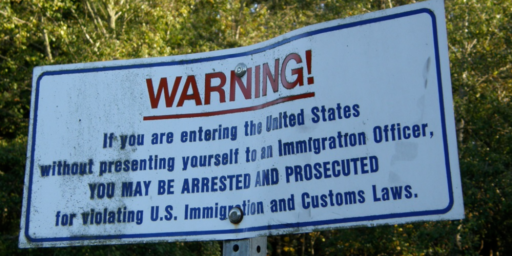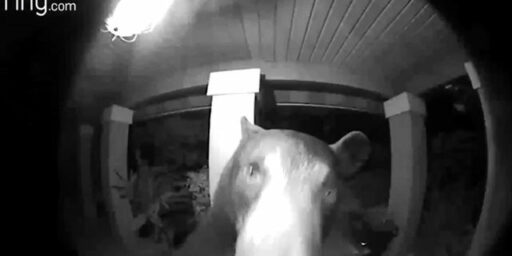Virtual Border Fence
The federal government has hired an aircraft company to build a really expensive electronic fence to secure the border.
It comes in the form of nine nearly 100-foot-tall towers with radar, high-definition cameras and other equipment rising from the mesquite and lava fields around this tiny town. Known as Project 28, for the 28 miles of border that the towers will scan, the so-called virtual fence forms the backbone of the Secure Border Initiative, known as SBInet, a multibillion-dollar mix of technology, manpower and fencing intended to control illegal border crossings.
If successful, hundreds of such towers could dot the 6,000 miles of the Mexican and Canadian borders.
Somehow, I don’t think we’ll ever get around to putting the towers along the Canadian border.
It’s going to be inordinately expensive and there have already been predictable glitches in getting the prototype up and running.
In a report in February, the Government Accountability Office warned that Congress needed to keep a tight rein on the program, because, it said, “SBInet runs the risk of not delivering promised capabilities and benefits on time and within budget.” Officials estimate total cost of the initiative through 2011 at $7.6 billion. The accountability office has suggested that figure is too low.
It always is. That’s the nature of our contracting system, though.
Rather than develop new technology, Boeing took existing cameras, sensors, radar and other equipment and bundled them into a system that although not technologically novel is unlike anything the Border Patrol now uses. The cameras, set off by radar, are to beam high-quality images of targets miles away to field commanders and agents, making it possible to determine almost instantly whether they are watching a family outing or a group of illegal immigrants. The information is to flow over a high-speed wireless network into laptops in dozens of Border Patrol vehicles that, in theory, would respond quicker and more efficiently to breaches than they do now.
[…]
With much of the 2,000-mile-long Mexican border a wilderness of plains, plunging ravines and soaring craggy hills, officials consider virtual fencing a pragmatic improvement to far-flung agents and physical fences — 88 miles now have primary fencing — that illegal immigrants knock down, bore through and slip over and under.
That makes sense. There’s going to be a little work to do, though, in making this work. And there are some privacy concerns, too.
The towers are ringed with a six-foot-tall chain-link fence, and the Border Patrol can warn people away through a loudspeaker. Private guards are at the towers now. On Thursday morning at a tower north of here, a reporter and a photographer walked right up to the tower, observing and photographing it for several minutes with no guard in sight. Mr. Aguilar said he was not concerned about such access, speculating that no threat was discerned or the cameras were not turned on then.
Residents near the towers have raised concerns, questioning why most towers are miles from the border and whether they will allow unscrupulous agents to peer into their bedrooms. “We don’t live in clusters,” said Roger Beal, who runs a grocery store in the isolated town of Arivaca, the site of a tower and about 10 miles from the border. “The homes here are not 10 feet apart. People value their privacy here, and we are just not used to being observed. Do it at the border. This isn’t it.”
Mr. Aguilar, the Border Patrol chief, said: “We are members of the community. We recognize their sensitivity. But we feel confident our officers are going to follow policy and common sense. Can I guarantee you nothing is going to happen? No, we are all human.”
Lovely. So, we’ve got a multibillion dollar border fence that’s actually ten miles from the border? And has the capability to look into people’s windows? Who signed off on this plan?






This reminds me of a story from the Viet Nam era. In an effort to detect movement along the Ho Chi Minh trail, the military placed electronic “sniffers” along the trail. These sniffers would detect body odors of all nature but were supposedly sensitive to the smell of urine. The intention was that when the Viet Cong stopped to relieve themselves along the trail, the sniffers would detect the odor and then send a signal.
The Viet Cong defeated the system by urinating directly on them, which caused them to malfunction.
Don’t ya just love them hi-tech solutions!